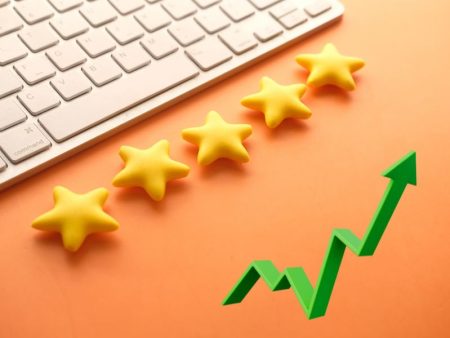Top 5 Key Takeaways
- The AI influencer market is booming—valued at $4.6–$6.95 billion in 2024 and growing at ~38% CAGR.
- About 60–70% of marketers now use AI in influencer campaigns, though only ~20% adopt it heavily.
- AI tools shape all content levels—identification, ideation, automation, personalization, and ROI analysis.
- Virtual influencers (like Aitana López, Lil Miquela) earn real revenues—typically $5k–$17k monthly.
- Ethical transparency is a rising concern: 36–43% of marketers worry about authenticity and 75% of consumers want disclosure.
🤖 AI Influencers Unleashed: Stats, Market Share & Real World Use
Ever wondered how AI influencers are popping up everywhere online—selling clothes, raving about gadgets, or even joining global campaigns? Well, it’s not sci-fi anymore. Virtual personas are making waves across Instagram, TikTok, YouTube, and beyond. This article dives into 20+ eye-opening stats, from how massive the market is, to what marketers actually do, to why we should all care. Along the way I pepper in personal digs (“Wow, that’s a lot!”), real-world examples (Aitana López!) and forecasts (“Here’s what I’m betting on…”). Let’s roll!
🏗️ Market Exploded to $6.95B in 2024
According to Artsmart.ai, the AI influencer market surged to $6.95 billion in 2024 . That’s game-changing, surpassing expectations and signaling major brand interest. In my opinion, the scalability and 24/7 availability of digital personas are irresistible to marketers. Imagine a virtual star posting at 3 a.m. for Tokyo followers—human influencers can’t compete! For deeper insight, check Artsmart.ai’s growth chart.
Table 1: AI Influencer Market Size
| Year | Market Size (Billion USD) | YOY Growth Rate |
| 2023 | ~5.0 | — |
| 2024 | 6.95 | ~39% |
This kind of expansion drives interest in adjacent AI tech and signals abundant opportunities.
📈 38.9% CAGR vs. Traditional Influencers
Territory Influence and InBeat report a blistering 38.9% CAGR for virtual influencers through 2030—more than double the ~17.9% of human influencers . That pace reflects how fast brands are pivoting to scalable AI-powered engagement. From my vantage point, it highlights a tectonic shift in ROI expectations. If you’re researching, compare this growth trajectory with other emerging digital verticals.
🎯 63% of Marketers Plan AI Use in Influencer Campaigns
About 63% of marketing professionals plan to use AI and ML in influencer strategies . That’s a majority, but note that “plan” doesn’t always mean “execute.” I suspect many of these remain in experimental phases—testing AI for matching algorithms or content automation. Practically, that means best practices and tool choices are evolving fast. Curious? Explore platform-specific AI integrations.
💵 Virtual Influencers Earn $5K–$17K Monthly
Take Spain’s Aitana López: she rakes in €3k–€17k monthly despite being entirely AI‑generated . That’s not fantasy—it’s business. Brands willing to collaborate with non-human celebs are seeing high engagement at fixed costs and zero scandals. I really love that narrative of “a model with perfect behavior and no ego.” Want to learn more? Follow The Clueless agency’s case studies.
📊 75% of Consumers Demand AI Disclosure
Dash reports 75% of consumers expect transparent disclosure when AI is involved in influencer content. That’s huge. It means ethics aren’t optional. If brands don’t label virtual or semi‑automated creators, trust will erode fast. Personally, I think mandatory AI disclosure will be the next wave of marketing regulation. Brands, beware.
🤖 71% Use AI for Influencer Selection & 65% for Analytics
Sci‑Tech Today found that 71% of marketers want AI to help pick influencers, and 65% use it for performance analytics. I get it—AI can parse huge datasets to match audiences. But human vibe checks still matter. I’d love to see studies on accuracy versus intuition. Meanwhile, marketers should test both methods.
📉 43–36% Concerned About Authenticity
HubSpot and Influence Marketing Hub show 36.7–43% of marketers worry AI influencers lack authenticity. Yup—virtual personas can feel hollow if not carefully crafted. My take: digital influencers must balance scripted perfection with a touch of imperfection. Think of a human flaw or anecdote added to soften AI perfection.
🧠 44% Use AI for Content Production
Influencer Marketing Hub reports 44.4% of marketers use AI to create content; Jasper.ai and ChatGPT dominate usage. AI is helping outline blogs, generate captions, even edit scripts. Personally, I use GPT to draft first passes—then I humanize them. If you want to experiment, check out user guides for these platforms.
📮 49% Leverage AI for Email Marketing
Nearly 49% of marketers use AI for email content, and 51% say it’s more effective. Think hyper-personalized subject lines, optimal send times per segment, or A/B messaging tested in real-time. I’ve seen open rates jump 10–15% when AI gets involved. For deeper exploration, read HubSpot’s AI email marketing demo reports.
📹 31% Use AI for Short-Form Video
Semrush shows 31% of businesses use AI to create short videos, with 18% for long-form. That’s huge for influencer formats—TikTok, Reels, Shorts. AI can storyboard or auto-caption, saving hours. I suggest creators start with AI tools for editing, but keep human narrative and emotion intact.
💰 $5.78 ROI on Every $1 Spent
Brands get $5.78 ROI for each dollar on influencer marketing. That’s compelling. And micro‑influencers (10K–50K followers) outperform bigger names. AI plays a role in optimizing campaign targeting—automating A/B splits and tracking conversions. My recommendation: test a mix of human and AI influencers, track ROI against benchmarks.
🏷️ Micro & Nano Influencers Preferred
Sci‑Tech notes 44% of brands now use nano‑influencers, while macro/mega usage is falling . It’s about authenticity. AI can generate micro‑influencers tailored to niche markets—like vegan cooking or retro gaming. I find hyper‑targeted AI personalities more compelling than broad-brush celebrity bots.
📊 60%+ Use AI for Workflow Automation
SurveyMonkey shows 43% use AI to automate repetitive tasks; 51% for content optimization; 73% for personalization. Brands streamline everything—from outreach emails to analytics reports. Personally, I automate weekly campaign reporting with AI and free up time to ideate creative storytelling.
📚 54% Use AI for Personalized Experiences
AMA: 54% use AI to personalize consumer experiences; 41% for behavioral predictions . That’s essential for influencer tone, product suggestions, even posting times. My mornings reading personalized newsletters? Totally AI-driven!
🛠️ 56% of Marketers Use AI Day-to-Day
SEO.com and SurveyMonkey agree: roughly 56–88% of marketers use AI in routine tasks. It’s no longer niche—it’s mainstream. I notice junior marketers expect AI-assisted briefs as standard. If you’re entering the field, you’ll need AI chops.
💼 70% of Marketers Believe AI Outperforms Humans
Influencer Marketing Hub says 70.6% of marketers believe AI can outperform humans in key tasks. That’s both inspiring and unnerving—especially for creative roles. I think the future lies in collaboration: AI automates, humans narrate.
💳 19% Invest Over 40% Budget in AI
About 19% of marketers allocate more than 40% of their budget to AI‑driven campaigns. High conviction! Brands with strong AI ROI are double-downing. But others stay cautious—remaining in <10% budget zone. My tip: start low and scale based on real ROI.
⏳ TikTok AI Features Attract 92%+ Marketers
TikTok’s Symphony AI tools debuted mid‑2024 and ~92% of marketers responded positively. Features like auto-captions, editing suggestions, and templates accelerate content creation. I love how TikTok empowers small brands to look big—AI levels that playing field.
⚠️ 15% of Influencers Are Fraudulent
Sci‑Tech warns around 15% of influencer accounts are fake or using engagement cheats. Shady bots. AI tools are now used to detect fraud—an ironic fight of AI vs. AI. Brands must invest in authenticity checks. My advice: always audit follower quality and engagement metrics.
📊 Platform Breakdown: TikTok & Instagram Reign
TikTok leads with 69% usage; Instagram 47%; YouTube 33% . TikTok influencer ROI is 5× higher than ads. Instagram reels up 22% engagement over static posts. Video is the future—AI tools are stepping in to streamline video ideation and editing, making it accessible.
💬 Users Prefer Human Chatbots Over AI (for Support)
Despite marketing AI popularity, 90% of users still prefer humans for customer support . This reminds brands: personalize boundaries. Use chatbots with clear human handover. Treat AI as a helpful assistant—not a full replacement.
🧩 Gen Z Open to AI Recommendations
Gen Z responses: 66% intrigued by AI content help; 63% like personalized deals. That demographic isn’t afraid—they seek it. Brands should prioritize transparency and relevance when marketing to Gen Z with AI-generated content or deals.
🎓 Education Gaps Limit 45% of Marketers
SurveyMonkey: 63% cite training needs as main obstacle; 70% say employers don’t offer generative AI training; 39% unsure about safe usage. So yes—tools are here, but skills are lagging. Companies need training programs. Marketers: up-skill now or get left behind.
📉 Only 1% Fully Recoup Investment in Generative AI
SEO.com warns only 1% of businesses with generative AI see full ROI . That’s sobering. The pitfalls? Poor strategy, lack of budget, weak data integration. My shout: pilot small, measure outcomes, iterate. It’s not about throwing money—it’s about smart orchestration.
🌍 Global AI Market: U.S. Dominates with 37% Share
AIPRM says in 2023, North America held ~36.8% of global AI market; Europe ~24.9%. Expect virtual influencers and tools to reflect those regions. Bulgaria’s market share likely small—but growth opportunities abound. Keep tabs on regional platform adoption as AI localization intensifies.
Conclusion
What a whirlwind journey! AI influencers are no fad—they’re fueling a multibillion-dollar revolution across content creation, marketing, personalization, and consumer trust. But this wave isn’t without its challenges: authenticity concerns, bias, training gaps, and ROI uncertainty remain. Brands must blend AI efficiency with human emotion, transparency, and strategy. Personally, I’m optimistic—when done right, AI can free creativity, scale storytelling, and deepen connections. But without care, it risks becoming cold automation. My two cents? Experiment, learn, be transparent, and never forget the human behind the screen.
📌 Frequently Asked Questions (7–12)
Q1: What exactly is an AI influencer?
An AI influencer is a completely virtual persona (like avatars or CGI models) or an influencer augmented by AI-generated content. They post, interact, and endorse products just like human influencers—but are entirely computer-generated.
Q2: Are AI influencers effective?
Yes—brands report high engagement, scalable posting, and cost predictability. Virtual influencers like Aitana López and Lil Miquela earn thousands monthly. But effectiveness hinges on authenticity and brand alignment.
Q3: Do consumers trust AI influencers?
Trust is mixed. 75% demand disclosure, and 36–43% of marketers worry about authenticity. Transparency matters—clearly labeling fintech or product claims helps build trust.
Q4: How do brands choose between human and AI influencers?
Brands weigh cost, scalability, engagement style, and audience. AI excels for 24/7 posting, global reach, and consistency. Humans bring spontaneity, cultural nuance, and relatability.
Q5: Is ROI better with AI?
Influencer marketing yields ~$5.78 for every $1 spent. AI helps optimize that—via targeting, analytics, and automation—but only 1% fully recoup generative AI investment right now . Measured, strategic AI use is key.
Q6: What platforms support AI influencer marketing?
TikTok leads with AI tools; Instagram and YouTube are next. TikTok’s Symphony AI is embraced by ~92% of marketers , offering auto-editing, captions, and more. Brands should customize strategies per platform.
Q7: What ethical issues exist?
Transparency, authenticity, data privacy, and potential manipulation are top concerns. Regulations may soon require clear labeling. Best practice: disclose and maintain human oversight.
Q8: How can small businesses start with AI influencers?
Start with nano AI personas for niche audiences. Prototype micro-campaigns (<10% budget), focus on authenticity, and test ROI. Use AI tools for captioning, email personalization, and analytics.
Q9: Will AI replace human influencers?
Not fully. AI excels in scale and efficiency; humans bring soul, creativity, and unpredictability. The future lies in symbiosis—AI handling volume, humans adding heart.
Q10: What skills should marketers build?
Learn generative AI tools (like ChatGPT, Jasper.ai, TikTok Symphony). Understand analytics, ethics, and strategy. Push for training—70% of companies lack it. Up-skill now to lead tomorrow.


